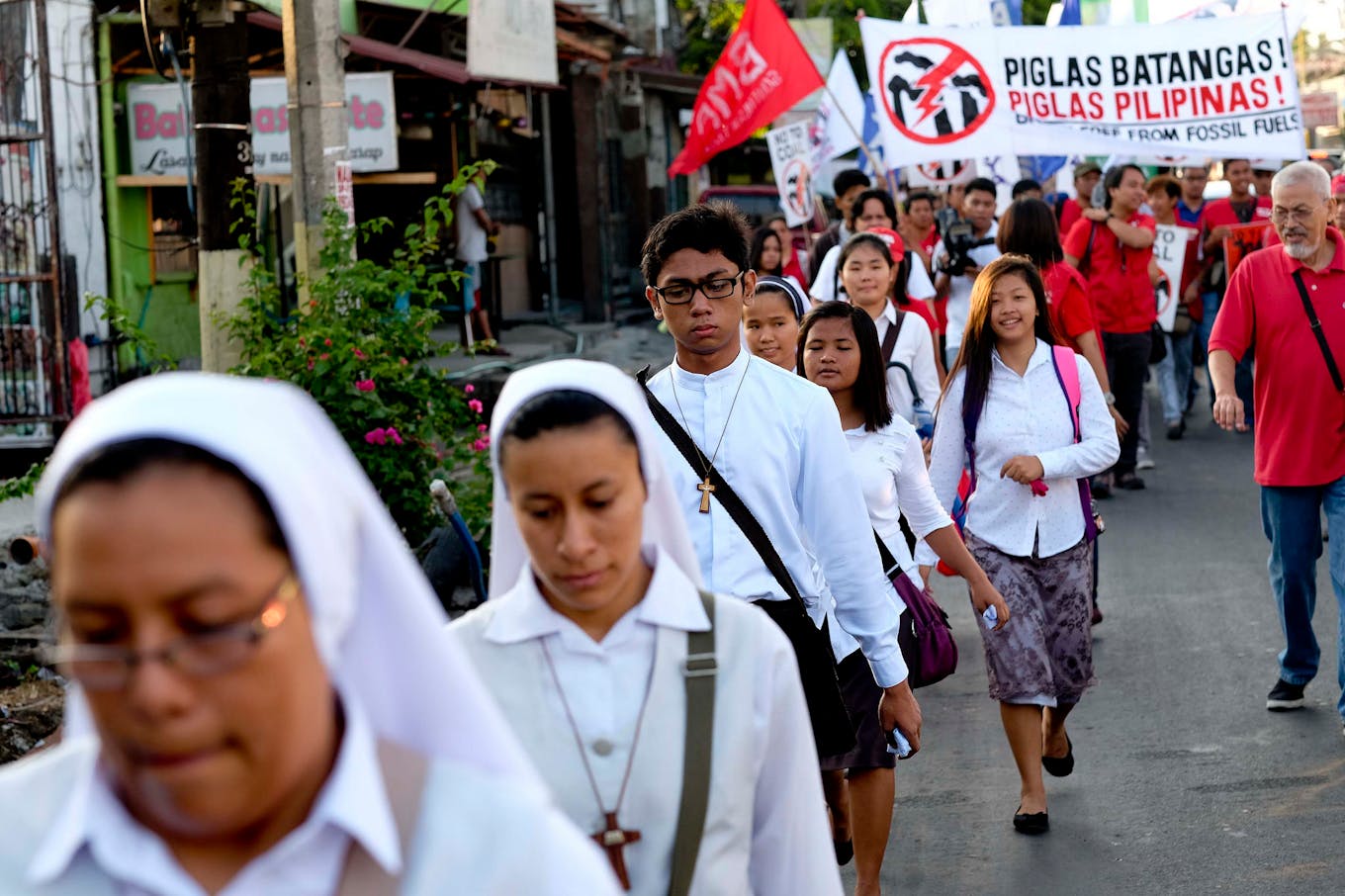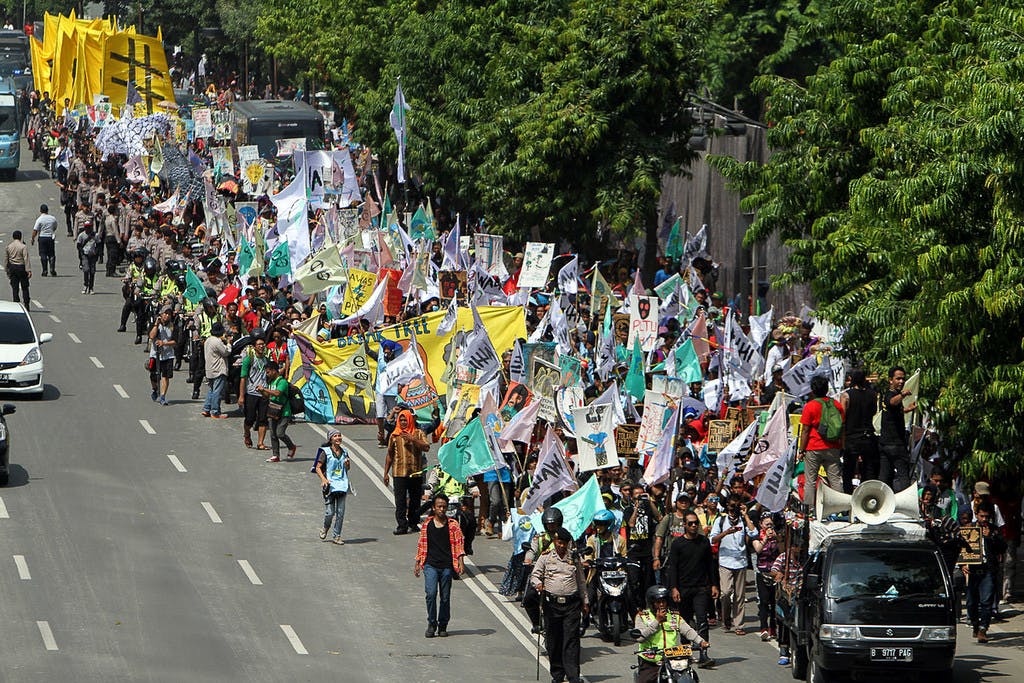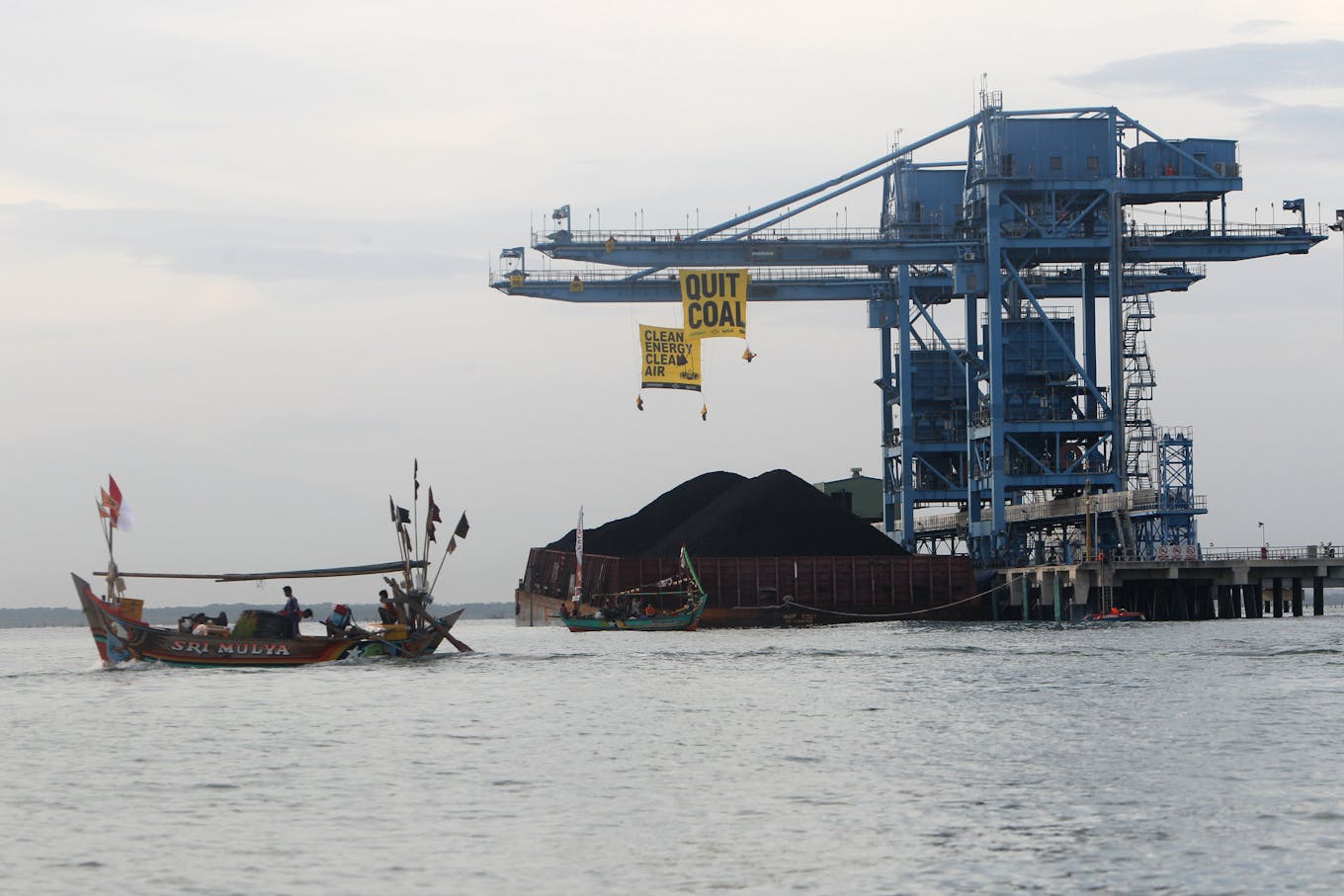The global anti-fossil fuel campaign Break Free wrapped up 12 days of protests on Monday, with more than 30,000 activists participating in what organisers called the “largest global civil disobedience in the history of the climate movement”.
To continue reading, subscribe to Eco‑Business.
There's something for everyone. We offer a range of subscription plans.
- Access our stories and receive our Insights Weekly newsletter with the free EB Member plan.
- Unlock unlimited access to our content and archive with EB Circle.
- Publish your content with EB Premium.
The initiative, which calls for a shift away from fossil fuels to a global energy system powered only by renewable energy, is jointly organised by organisations such as Greenpeace, climate campaigning group 350.org, and the Indigenous Environmental Network.
Activists in 13 countries staged actions such as laying across rail lines to block coal trains, paddling kayaks into harbours to obstruct coal shipments, and marching in the streets to advocate for cutting fossil fuel use - one of the biggest contributors to climate change causing greenhouse gas emissions.
In Australia, for example, about 2,000 kayakers gathered in the Newcastle harbour in New South Wales, and 70 activists blocked a nearby rail crossing to prevent about US$20 million worth of coal shipments from leaving the port.
Across the rest of Asia Pacific, some 10,000 protestors - led by local Archbishop Ramon Arguelles - marched in Batangas City, Philippines to protest against a proposed coal-fired power plant in the city, and to demand that 27 other planned coal plants in the country also be cancelled.

Protesters in Newcastle, Australia, block access to the only railway line carrying coal into the port. Image: Break Free, CC BY-NC-SA 2.0

Thousands of people from different sectarian and religious groups march around Batangas City to protest coal. Image: Break Free, CC BY-NC-SA 2.0
Meanwhile more than 3,500 citizens marched in the Indonesian capital of Jakarta to call on the country’s President Joko Widodo to steer Indonesia, which is currently one of the world’s biggest coal producers, towards renewable energy.

Thousands of people took to the streets in Jakarta to urge the government to end Indonesia’s addiction to coal. Image: Break Free, CC BY-NC-SA 2.0
Elsewhere in the country, Greenpeace activists also stopped operations at the Cirebon Coal Power Plant for 12 hours by climbing the two cranes used to unload coal from ships reaching the plant. The power plant, located in West Java, will be expanded as part of a national initiative to increase power generation capacity.

Greenpeace Indonesia activists unfurled a banner saying ‘Quit Coal’ from the cranes as they block the loading of coal for the the Cirebon Coal Power Plant, Indonesia. Image: Greenpeace, © Afriadi Hikmal / Greenpeace
Yeb Sano, executive director of Greenpeace Southeast Asia, said that the region is a “major battleground” in the fight against fossil fuels.
“As our communities rise against this addiction to coal, we hope to inspire massive civil participation all over the planet,” he added.
Activists risked arrest by participating in the Break Free protests, which advocated disruptive civil disobedience and took place shortly after global temperatures reached record-breaking highs for seven months in a row, pointing to accelerating global warming.
According to the organisers, at least 180 arrests were made in the United States, Australia,and Germany over the course of the campaign.
The end of the protests also coincided with news from Australia’s Cape Grim station in Tasmania that it had recorded an atmospheric carbon dioxide concentration of more than 400 parts per million (ppm) for the first time. The amount of carbon dioxide in the atmosphere is linked to how much heat it traps - many scientists say that 350 ppm is a safe level to avoid adverse climate change.
Bill McKibben, co-founder of 350.org, noted in a statement that “this is the hottest year we’ve ever measured, and so it is remarkably comforting to see people rising up at every point of the compass to insist on change”.
The protests are yet another blow to the fossil fuel industry, which is already struggling with falling oil prices, political commitments by countries to cut their greenhouse gas emissions, and a growing movement among institutional investors to pull funding from carbon-intensive companies.
The latest casualty was United States-headquartered Peabody Energy, which is the world’s largest coal miner, but filed for bankruptcy protection in the US last month.
Meanwhile, renewable power generation capacity last year also increased by 152 gigawatts or by 8.3 per cent compared with the previous year, according to the International Renewable Energy Agency.
This was the fastest growth rate for renewables ever recorded, which campaigners said was a sign that a fully renewable energy system is “more feasible than ever”.
But despite these trends, governments across the world give out billions of dollars in fossil fuel subsidies every year, and oil, coal, and gas continue to dominate the global energy mix today.
Payal Parekh, programme director at 350.org, noted that “ordinary people are joining the fight for our collective survival as communities are experiencing first-hand the consequences of climate change and the damage inflicted by the fossil fuel industry”.
“It’s up to us to break free from fossil fuels and accelerate the shift towards a just transition to 100 per cent renewable energy,” she added.










